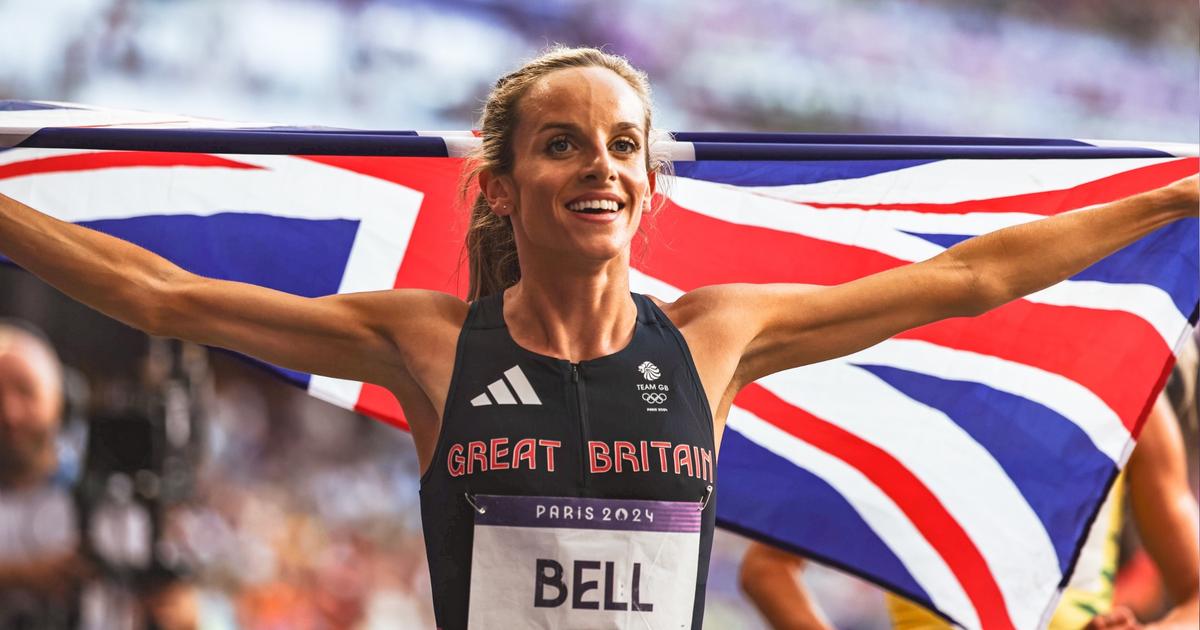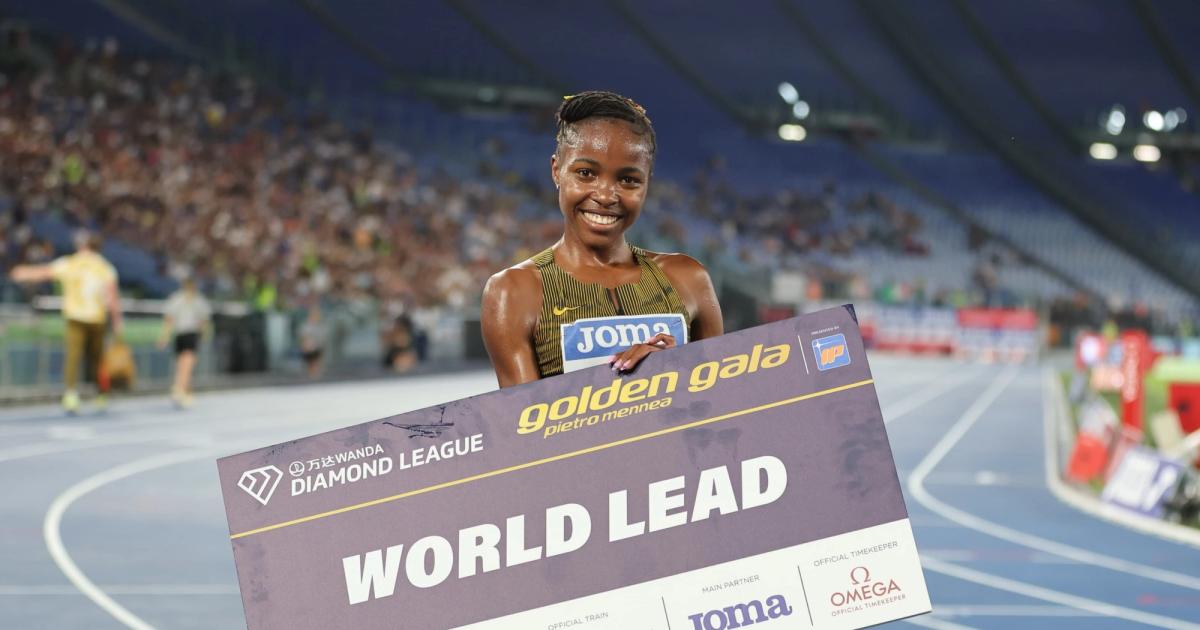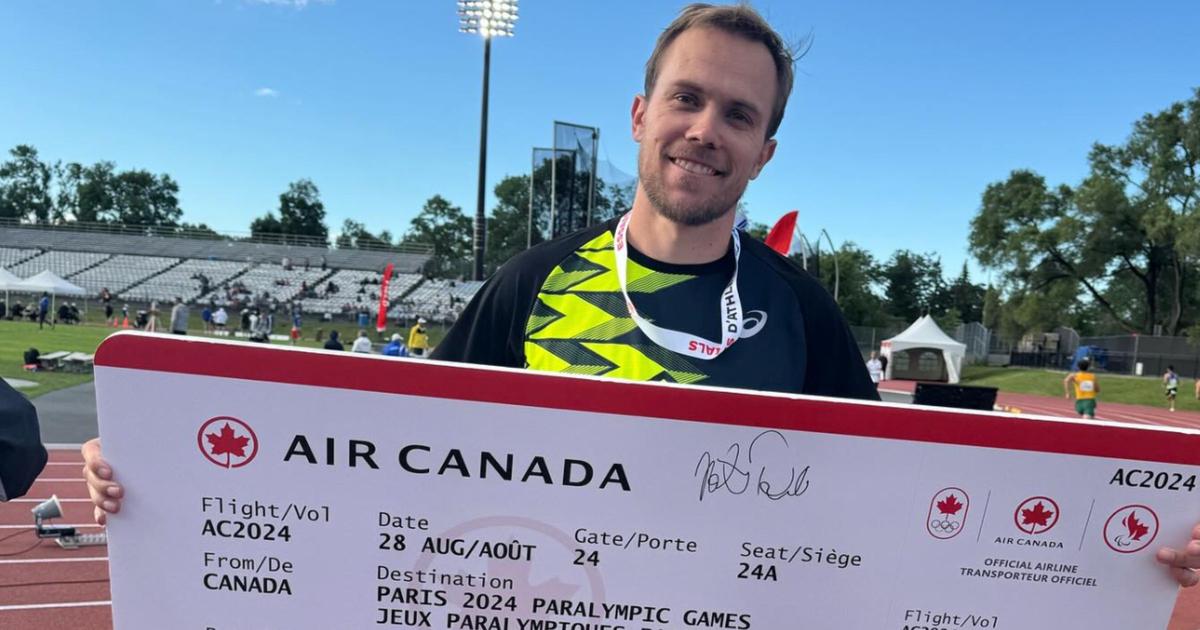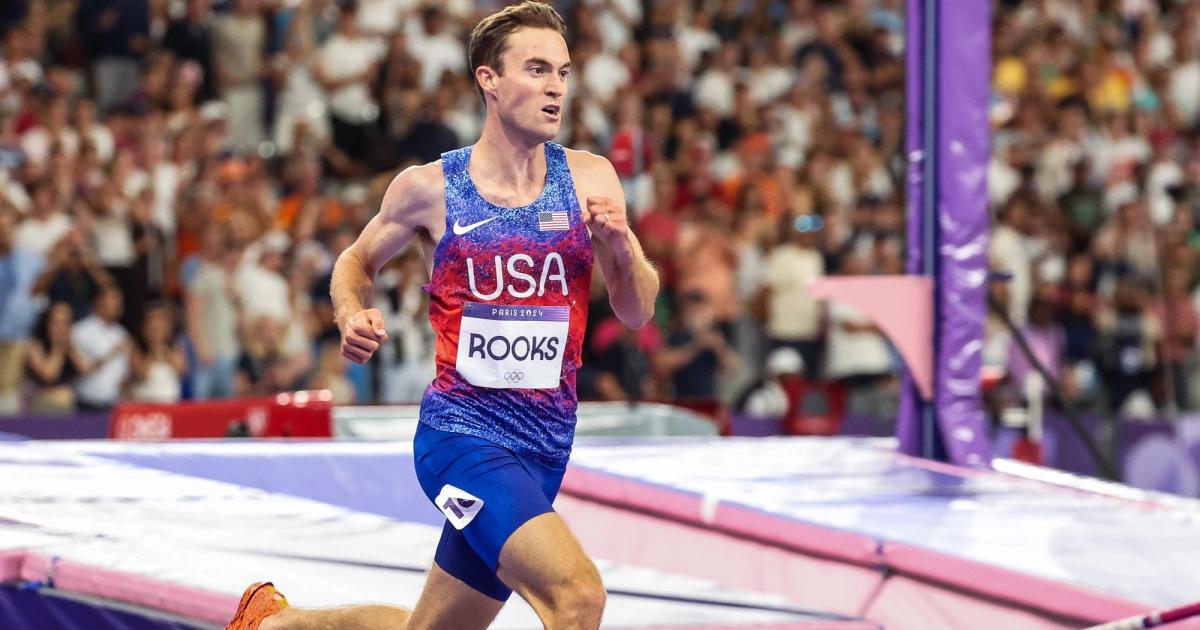September 9, 2024
Listen
"You're going to have stuff go wrong regardless. This year I had a lot of stuff go wrong, but it's not necessarily about not having anything go wrong. It's about how you respond to those issues that will inherently come up."
Today’s guest is Ryan Crouser. Ryan just won his third straight Olympic gold medal in the men's shot put in Paris, becoming the first shot putter in history to win three Olympic titles. He did so with a mark of 22.90m, which is the second best in Olympic history, behind only his performance from Tokyo in 2021. The season wasn't easy for Ryan after winning World Indoors in Glasgow in March, he battled through pectoral and elbow injuries throughout most of the spring and the early summer that forced him to open his season at the U.S. Olympic Trials. Despite this adversity, he still came out on top when it mattered most, and now he's chasing something big in the last few Diamond League meets of the year.
In this episode, he talks through the recovery process after picking up an elbow injury at the World Indoor Championships in March and then tearing his pectoral muscle about a month later. Ryan wasn’t able to open his season until the U.S. Trials, but he picked up the win there to secure his spot in Paris. The Olympic final was never in doubt, as his first throw was good enough to win the competition by almost half-a-meter, and rain in the final three rounds stymied a comeback attempt from his rivals. His third straight Olympic gold makes him only the fourth thrower to ever win three Olympic titles.
With the highest-pressure competition of the year out of the way, Ryan is ready to produce something massive, closing out his season with six meets in the span of three weeks.
Host: Paul Hof-Mahoney | @pauliethrows on Instagram
Guest: Ryan Crouser | @rcrouser on Instagram

Kevin Morris/@kevmofoto
The following interview excerpt has been edited lightly for clarity. You can listen to the full interview with Ryan Crouser on the CITIUS MAG Podcast – available on Apple Podcasts, Spotify or wherever you get your shows.
CITIUS MAG: Winning that title in Paris, with the Olympic crowd there this time compared to Tokyo, how special was that moment for you?
Ryan Crouser: For me, it was very special. I feel like it was the Olympics that I appreciated the most, and enjoyed the most. Every Olympics is different, with four years between each one, being kind of a snapshot or a glimpse into that point in your athletic career.
In 2016 I was the new kid on the block, fresh out of college. I don't think at the time I would appreciate how much dedication and work would go into the following eight years to win two more after that. 2021 was during the pandemic, it just felt like a pressure cooker kind of stress. But I was throwing very well, so I felt like it was kind of mine to lose at that point, from a fresh off of the world record.
Injuries and setbacks this year have been very, very frustrating, but once I was finally there, I felt like I was able to enjoy it because I realized how close I was to not being at the Olympics. And so, I feel like if nothing else, it was a sign of growth in me as an individual.
CITIUS MAG: Coming into this year, you had those injury question marks surrounding you. And then internationally, the other guys had been throwing so well. What were your expectations moving into these Olympics?
Ryan Crouser: It was pretty unknown where I was at on the top end, everybody was throwing well. And then I was just not really throwing at all for most of the season. It was kind of a trade off between who do I push intensity or do I push frequency with the elbow injury?
If I threw hard, it was three-plus days to get where I could throw again. And it gets tough to build off that. Each training session, if you have too much time between it, doesn't really play off the one before. The technical cues don't match up. So if it feels like you take a step forward and then a step back – you don't really build and stack progress. And so it was a commitment to frequency. But in that aspect, I couldn't throw hard, I was just throwing often. I didn't know what distance would be there because I'm throwing a lot. I'm throwing decently in training. But in the end, there's no intensity. So there's no you're not seeing the ball go far, you don't really know if the ball can go far. I was just trying to execute well technically in practice, lay the foundation and get there in a kind of as healthy as I could be to the U.S. Olympic Trials.
CITIUS MAG: Could you just talk to us a little bit about what the timeline looked like for you getting back into training?
Ryan Crouser: The timeline was especially frustrating. I mean, any injury or setback is frustrating, but this year was especially so because they just kept coming.
I injured my elbow at World Indoors and had a kind of ulnar nerve entrapment, impingement at the elbow that I struggled with. And so that was the first week of March, I believe it was. And then as soon as I remember, I had my second throwing session back that felt productive. And that was the first week of April when I tore my pectoral. And then it was about four or five weeks with that. And as soon as I came back off of that, there was the "double crush," in quotes, an impingement in two places C6 vertebrae and elbow. It was very difficult mentally because of the double crush syndrome, because I would throw or try to throw and I wouldn't feel like I set the elbow back too much. But then three days later, my elbow would just flare up out of nowhere completely unrelated to throwing. And lo and behold, it was because of the C6 vertebrae impingement. When I was squatting with a high bar back squat bar position, it was impinging it. And so it took a couple of weeks to figure that out.
Once we did finally figure that out, we started treating the C6 impingement as well as the elbow, and we started to see a linear line of progress and I got cleared and started throwing later in May.
CITIUS MAG: What were some of the individual moments you can pick out that were either the scariest for you, or you had the biggest doubts of being able to compete up to the level you want to see from yourself in Paris or in the U.S. Trials?
Ryan Crouser: The moment I tore my pectoral because that's just a bad feeling. That feeling of muscle tearing is always unfortunate, especially as a thrower with the right pectoral being such a primary muscle in what I do. The one that stands out the most mentally was after I got cleared to throw and had been throwing for a week... at that point, I was two and a half weeks out from the Olympic Trials, and it was my first hard session to test it, and it went so unbelievably bad. I took eight hard throws and only two of which were over 20m. One was 20.0m, and one was 20.20m. All of the other six were in the 19m range. That would be lucky to even make it out of qualifying at the Olympic Trials, and that was hard throwing. So that was the moment I was hitting the panic button a little bit, not knowing. And at that point, the big question was, can I even get back to that level that I need to be at to be competitive in the sport? Because 20m doesn't do anything at all, unfortunately, as an American shot putter.
CITIUS MAG: What are some of the biggest lessons that you've learned from this time in your life, where there were lots of doubts and question marks?
Ryan Crouser: The biggest thing in looking back on it that I'm very proud of is just the ability to keep moving forward. To keep moving forward and staying productive. When things are going wrong, it's so easy to hang it up or call it a day. But even when I tore my pectoral – even the next day getting up and still training, still doing sprints, still doing plyometrics. Just because I was unable to lift upper body and throw, still finding ways to try to be productive and still doing that with a purpose.
There's times that are like, 'I can't do this. I'm going to try and do something else.' But doing them with a purpose to the best of my ability, trying to make the most out of it. It wasn't optimal, but because I wasn't throwing four sessions a week, I would still put my shoes on and still do drills, still do the movement to stay familiar with it, and then also more time spent in the weight room, more time doing sprints, more time doing plyometrics. So my strength numbers were good, my body weight was higher because I'm not having that calorie expenditure or the time expenditure of throwing. So just finding ways to stay productive I think was the biggest takeaway for me.
You're going to have stuff go wrong regardless. This year I had a lot of stuff go wrong, but it's not necessarily about not having anything go wrong. It's about how you respond to those issues that will inherently come up.
CITIUS MAG: In these last couple months, what would you point out as some of the most important things you’ve done in training and recovery that either have been part of your routine for the last couple years or that are new things you’ve had to implement with trying to come back from these injuries?
Ryan Crouser: The biggest change that I've had to make is more on the mental side – admitting that at 31, I can't do the same workouts I did at 25 or 26 years old. As a self-coached athlete, I write my programs out well in advance. I know year-to-year what I would expect for me. But having done the same workouts, with a slight tweak or some slight change, for five or six years, and then admitting that it's not that I'm weaker and it's not that I'm not putting in the effort, it's just that my body doesn't handle the load as well as it did when I was younger. It took me being too hard-headed and leading to, without a doubt, having some overtraining and some of those injuries – was me not wanting to admit that I was getting older and having to modify the training. That's been a significant change is just on the mental side, the willingness to accept that.
CITIUS MAG: What would you say with your training and recovery regimens are some of the underrated things that you do that you don't necessarily see or hear everyone else doing?
Ryan Crouser: The biggest thing is giving a conscious focus to recovery. Structuring your week to account for and optimize recovery is something that is starting to gain traction and will continue to gain traction. And providing as much emphasis on an intense recovery session, a bit of irony there, but scheduling that with your week to have as much weight as, say, a high-intensity speed workout or a high-intensity throwing session. As well as paying attention to sleep. That's something where I see athletes in general almost going backwards a little bit. Even personally, I'm not I'm not perfect, but it's something that I'm aware of and trying to be better at.
And then my partnership with Thorne has been fantastic. As an athlete, informed choice products are important to know what I'm putting in my body. It's third-party tested and exactly what's on the label is what I'm putting in my body. And so for me, trying to be the best in my sport, I feel like it's a logical partnership to partner with the best company in terms of quality of sports nutrition products.
CITIUS MAG: You're closing your season out with something like six meets in 20 days. How much more important does recovery become when you're not just at training intensity, you're at competition intensity, and you're on the road traveling all across Europe?
Ryan Crouser: It's not nearly as fun as it used to be. There used to be a lot more partying and drinking going on. Now there's absolutely none of that. For better or worse, the sport has definitely matured.
It takes a mindset adjustment because there are two things at play. One is that you do have a really high competition frequency, and you have to manage your expectations. You obviously want to throw well and compete very well, but there's some days that it's not there. And when you're competing at that frequency, you're having significant undulations in your daily potential. And so you're trying to match up those peaks to the meet.
And then just managing the frequency and going hand and hand with that is the training load. You have to realize that you are just deloading all the way. This is the "burn it out" end of the season. You're at the very end of your taper. The taper as a whole was for the Olympics. So right now the weight room is very minimal maintenance and you're not going to progress right now. You're not going to get stronger. You're just trying to start, stop or slow the bleeding, so to speak. And so we're kind of limiting what you're doing on the days between competitions to make sure that those are facilitating optimal performance. Instead of, as an athlete you're like, "Dang, it's been three or four days since I lifted. I have to lift today." But if you have a meet tomorrow it's like, is that lift going to help your performance through the end of the year? So some tough questions that are a little bit difficult to answer because the coach part of me, as well as the athlete part of me, wants to stay on my normal schedule like I need to lift on these days. But flexibility is key at this end of the season.
CITIUS MAG: Moving to the technical side of things now, you mentioned that you are self-coached and despite having the world record for the last three years now, you have made some pretty significant technical changes. We had the Crouser slide implemented at the beginning of last year, and in Silesia you had your right foot a little more towards the middle of the circle. So as your self-coach, what does that process look like, coming up with a little technical change and then implementing that to the point where you can compete with it?
Ryan Crouser: It's kind of a two-for-one. The biggest thing is that I am not making technical changes just to make them. It has to pass the logic test. Like, "Can I explain why this is better? Is there an actual fundamental reason why this is better?" The Crouser slide did that for me and it increases my lateral shift, increases my lateral velocity with the step and also increases my rotational radius. So you increase the radius while turning it with the same named rotational velocity, and that instantaneous velocity of the right foot is actually going faster. And so it checked that box for me.
And then I think the biggest one, because you don't want to just be making changes randomly, you want it to be logical. So that's the first step, but then the biggest one in terms of the impact than is it from a physics standpoint, is the mental approach. When you make a big change like that, and add to or make any significant technical change, it's much more mentally engaging for me. When I first started doing the step across I was excited to go to practice. I was throwing in December, which usually is not an exciting time of year, but I find myself excited to go throw, even though it's whatever, like the 5000th throwing practice of my career. It's a break from the monotony and the mental engagement. And for me, being in my twentieth-something season of throwing, what is just as important as anything else is that mental engagement.
At this time of the year, you're running out of gas. The best analogy is that you've peaked for the Olympics and things are kind of generally trending down. But the one thing is that you still have the foundation. It hasn't been completely eroded yet. My body weight is surprisingly good right now, and so you can still have big throws, but you've kind of lost that smash factor. It's got to be fluid, it has to flow. And so those big throws can surprise you because you're loose and relaxed and you're not expecting them. And so I'm kind of embracing that with this new technique.
Timestamps:
- 2:35 - Post-Olympics experience and upcoming competition schedule.
- 3:22 - How gold in Paris was different from Tokyo and Rio.
- 4:52 - Expectations for competing against the best Olympic field in history.
- 6:40 - Injury timeline and getting back into the flow of training.
- 8:40 - Overcoming moments of self-doubt during the recovery process.
- 10:13 - Biggest takeaways he’s had from this tumultuous and scary point in his career.
- 12:04 - Changes to training made due to injuries and getting older.
- 13:20 - Underrated recovery habits.
- 16:06 - Managing recovery during a busy European schedule to close out the season.
- 19:45 - Importance of velocity-based training.
- 22:05 - How track and field sits on the cutting edge of training and performance innovations.
- 23:53 - The process of devising and implementing technical changes as a self-coached athlete.
- 28:33 - Coaching Olympic discus champion Rojé Stona and his NFL pursuits.
- 30:55 - If a potential return to discus could be in the cards.
- 31:45 - Ryan's hopes to launch an American shot put league.
Keep up with all things track and field by following us across Instagram, X, and YouTube. Catch the latest episodes of the CITIUS MAG Podcast on Spotify and Apple Podcasts. For more, subscribe to The Lap Count and CITIUS MAG Newsletter for the top running news delivered straight to your inbox.
Support The Sponsor
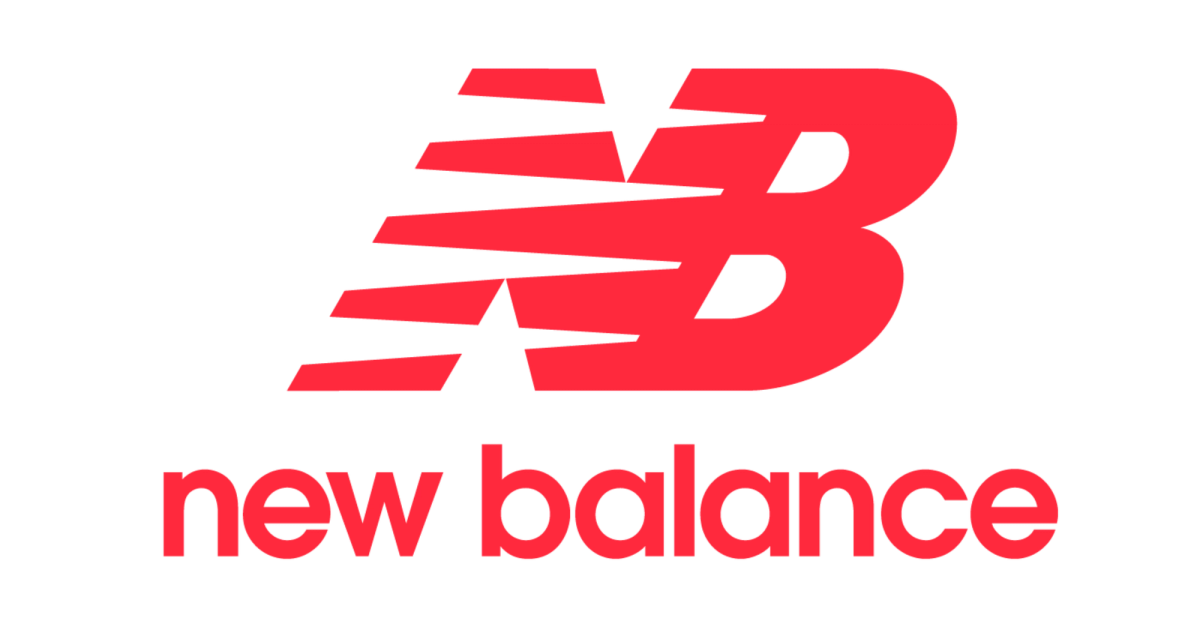
NEW BALANCE
Experience the perfect blend of comfort and performance with the New Balance SC Trainer v3. Ideal for marathon training, it offers a firmer, more responsive ride with enhanced cushioning. Whether it's easy runs or uptempo workouts, the SC Trainer v3 has you covered. Discover more at NewBalance.com/Running.

OLIPOP
For the past year, we’ve redefined Olipop as more than just a healthy drink known for its gut microbiome with a low sugar content and a much better alternative to regular soda. You know there are more than 16 flavors, including classic root beer, cherry cola, and lemon-lime. You know it as The Runner’s Soda. Get 25% off your orders by using code CITIUS25 at DrinkOlipop.com.

Paul Hof-Mahoney
Paul is currently a student at the University of Florida (Go Gators) and is incredibly excited to be making his way into the track and field scene. He loves getting the opportunity to showcase the fascinating storylines that build up year-over-year across all events (but especially the throws).

